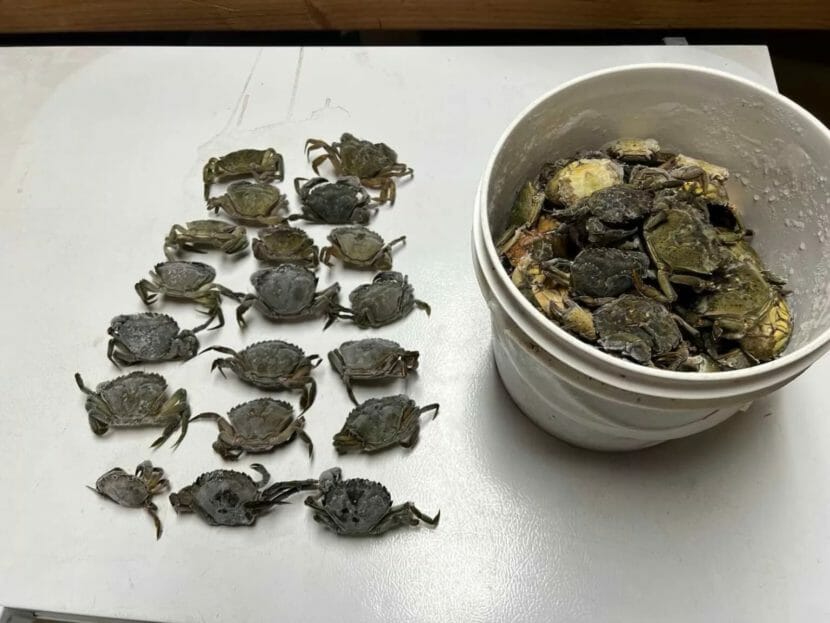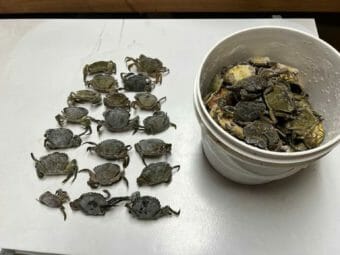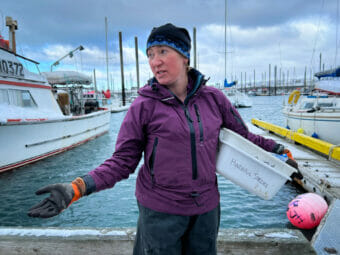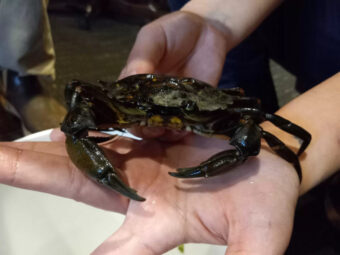
Alaska Department of Fish and Game announced on Friday that shells of the invasive European green crab were spotted along the shores of Bostwick Inlet on Gravina Island near Ketchikan.
European green crabs have the potential to wreak havoc on commercial and subsistence fisheries in Alaska — the crabs are highly competitive and very hungry. They eat clams, oysters, scallops, other crabs and are known to rip up seagrass in their search for food. Fish and Game said that as a result, they can displace local crab populations like the Dungeness crabs in Bostwick Inlet. They can also decimate eelgrass and saltmarsh habitats, disrupt ecosystem balance, and cheapen overall intertidal biodiversity.
According to the National Oceanographic and Atmospheric Administration, they have even been reported in British Columbia eating juvenile salmon. The International Union for Conservation and Nature ranks them as one of the top 100 worst invasive species in the world.
Green crabs are believed to have first showed up in Alaska waters in 2022. That was when biologists with the Metlakatla Indian Community found the first evidence of the species, a handful of molted shells, on Annette Island.
The discovery of more molted shells on Gravina Island recently, a few miles across Nichols Passage from Metlakatla, marks the first time the crabs have been documented outside of the Annette Island reserve.
European green crabs were first reported on the Pacific coast in San Francisco in the late 1980s and have been expanding outward and northward since. In Washington and Oregon, the crabs have sabotaged a number of critical fisheries, and the states have spent decades trying to wipe them out, with no success.
Since the invading crustaceans were first discovered on Annette Island, the Metlakatla Indian Community has been doing damage control through a method called “functional eradication,” which involves trying to trap and kill as many as possible. Fish and Game said they’ve successfully thinned 3,000 of the crabs from local waters, including pregnant females which can lay hundreds of eggs. However, there’s no sure-fire way to eradicate the crabs once they’ve arrived.
Green crabs can sometimes be a misnomer — they can be several different colors. But Metlakatla’s tribal wildlife department has said one of the big giveaways is the five spines on either side of their eyes and three bumps in between their eyes.
Officials say if the crabs keep marching north, it could have serious effects on Alaska’s commercial and subsistence fisheries. They are asking people who think they’ve found a green crab or a green crab shell to take it to the nearest Fish and Game office, or take a photo of it and send it in.
For pictures or more information on the invasive crabs, you can visit the ADF&G website. You can also report sightings of European Green Crabs to the Invasive Species Hotline: 1-877-INVASIV. To submit photos and for more information about invasive species, contact: Tammy Davis, ADF&G Invasive Species Program coordinator: tammy.davis@alaska.gov or (907)465-6183.



